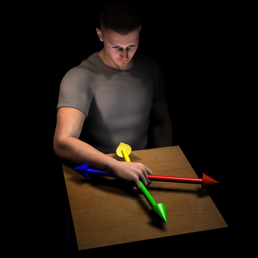Dipartimento di Matematica Guido Castelnuovo, Università Sapienza Roma

Abstract: A fundamental challenge in neuroscience is understanding how the central nervous system (CNS) succeeds in coordinating the many degrees-of-freedom of the musculoskeletal system to control limb movements. A long-standing hypothesis is that the CNS relies on muscle synergies, coordinated activations of groups of muscles, to simplify motor control. Evidence that the combinations of a small number of muscle synergies underlies the generation of muscle activation patterns has come from several studies performed in the last two decades with different species and experimental tasks. Muscle synergies, extracted from multi-muscle electromyographic (EMG) recordings using decomposition algorithms such as non-negative matrix factorization, capture regularities in the spatial, temporal, and spatiotemporal organization of the muscle patterns. However, whether muscle synergies are only a parsimonious description of the regularities of the motor commands rather than a key feature of their neural organization is still debated. Further support for a neural organization of muscle synergies has come from testing muscle synergies as a causal model and from identifying their neural substrates. If muscle synergies are organized by the CNS they must affect the difficulty in learning or adapting motor skills. An experiment with human subjects using myoelectric control of a mass in a virtual environment has tested the prediction that it must be harder to adapt to perturbations that require new or modified synergies than to adapt to perturbations that can be compensated by recombining existing synergies. To identify neural substrates of muscle synergies, hand movements were evoked by electrical stimulation of motor cortical areas of non-human primates. The evoked muscle activation patterns could be accurately reconstructed by the combinations of a few muscle synergy highly similar those extracted from voluntary hand movements, suggesting a cortico-spinal organization of muscle synergies. In sum, these results suggest that muscle synergies are modular elements organized by the CNS to provide a low-dimensional representation of the motor commands allowing to control the musculoskeletal system by directly mapping goals into a small number of synergy combination parameters.

